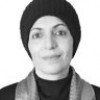From ‘Dune’ to Decadence (and Back)
Advertisement
Subscriber-only Newsletter
By Ross Douthat
Opinion Columnist
There are three great novels that I read as an early adolescent that I would take to a desert island if I ever needed to be set up for decades of rereading: The “Lord of the Rings” trilogy, “Watership Down” and “Dune.” I’ve written more in the past on J.R.R. Tolkien’s work and even on Richard Adams’s great rabbit epic than on Frank Herbert’s magnum opus. So I can’t let the occasion of “Dune: Part Two” and its imperial command of the box office pass without some kind of comment.
Two comments, to be precise. The first is about the story’s contemporary resonance. You can find plenty of other takes on the specific way that Denis Villeneuve’s movies deal with Herbert’s depiction of colonialism, resource wars, Islam-coded religious fundamentalism and a white savior figure who might also be a world-historical villain.
What’s getting less attention, and what I want to highlight, is the larger civilizational dynamic that the book sets up, and how it speaks to our own moment. In particular, it speaks to the ways that the developed world today feels stuck in a loop of decadence and disappointment and sterile repetition, from which (some) people look upward and outward in search of hope — seeking it in the promise of artificial intelligence, in genetic engineering and the dream of “transhumanism,” or in a new age of spaceflight or a revival of religion.
“Dune” the novel, somewhat more clearly than its adaptation, presents a galaxy-spanning society that has wrestled with each of these possibilities and made very concrete choices, such that its civilization is defined by how it embraces, rejects or adapts to each of the forms of dynamism I’ve just listed.
Space travel, obviously, has been the engine of this civilization’s development and spread. A.I., on the other hand, has been invented, embraced and then explicitly rejected through the long-ago convulsion called the “Butlerian Jihad,” which establishes as a commandment: “Thou shalt not make a machine in the likeness of a human mind.”
Transhumanism, meanwhile, has been rejected in some ways and embraced in others. In place of computers, Herbert’s galactic imperium has cultivated what we would consider superhuman mental powers, often via the use of mind-altering drugs — Google Gemini, absolutely not; psychedelics, maybe so. At the same time, the imperium’s powerful Bene Gesserit sisterhood has pursued a vast eugenic project, but one that’s hedged about with various taboos. When a Bene Gesserit reverend mother in “Dune Messiah” is offered the chance to continue her eugenic work via artificial insemination rather than arranged pairings of men and women, she recoils from the idea, since “no word or deed could imply that men might be bred on the level of animals.” Selective mating, yes; cloning and I.V.F., maybe not.
Finally, religion has flourished in this spacefaring future via a kind of syncretistic creativity: The novel’s main scripture, the Orange Catholic Bible, is the kind of ecumenical holy book that probably seemed a bit more plausible in the 1960s, when “Dune” first appeared, than it does today, and the religions of the future........
© The New York Times





















 Toi Staff
Toi Staff Gideon Levy
Gideon Levy Andrew Mitrovica
Andrew Mitrovica David Hutt
David Hutt Neve Gordon
Neve Gordon Patrick Gathara
Patrick Gathara Moncef Khane
Moncef Khane Ron Kronish
Ron Kronish Dr Ramzy Baroud
Dr Ramzy Baroud Rami G Khouri
Rami G Khouri Brahma Chellaney
Brahma Chellaney Tarik Cyril Amar
Tarik Cyril Amar Ghada Ageel
Ghada Ageel Steve Wenick
Steve Wenick Brad Glosserman
Brad Glosserman Fernando Romero Nuñez
Fernando Romero Nuñez
